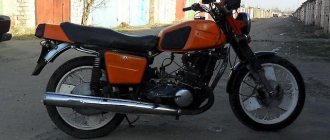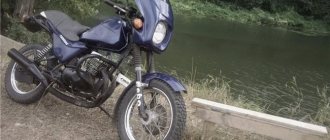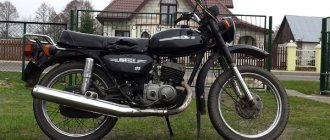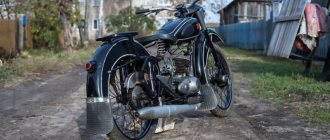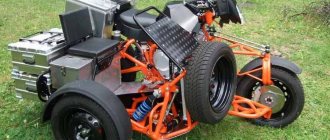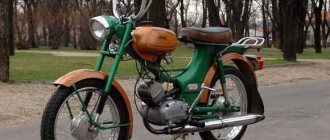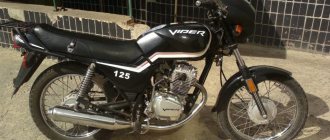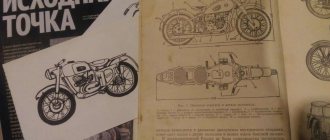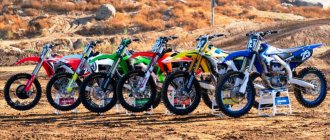Among domestic hunters, the IZH-12 double-barreled shotgun of 12 or 16 caliber is the undisputed legendary shotgun. This vertical rifle has a classic design, it is perfect for hunting animals or birds, and for sport shooting. At the moment, the IZH-12 gun has already been discontinued, therefore, if you want to get a similar weapon for use, you will have to turn to the services of the secondary market.
Even now, the IZH-12 with restored barrels is perfect for novice hunters to master the intricacies of the hunting craft. The gun is reliable, unpretentious and highly accurate.
IZH-12 is an old representative of domestic shotguns; its production began in 1962 and ended in 1972.
History of the creation of IZH-12
The Izhevsk Mechanical Plant, which in 1975 was renamed IZHMASH, and in 2013 became the Kalashnikov Concern, gave Soviet and Russian hunters many excellent hunting rifles. Most novice Soviet hunters first became acquainted with the products of this plant.
Even now, when the Kalashnikov Concern produces a wide range of new hunting shotguns and rifles, the old models are highly valued by experienced hunters. For example, the IZH-12 hunting rifle is still considered the best over-and-under in the entire history of the Izhevsk plant. Every hunter who started hunting back in the 70-80s remembers with warmth such a wonderful weapon as the IZH-12. Even many young hunters who managed to shoot with the IZH-12 gun are surprised by its accuracy and reliability.
The Izh-12 double-barreled shotgun with vertically positioned barrels traces its ancestry to the IZH-59 Sputnik shotgun, which even many old hunters do not remember. The IZH-59 was produced for only 2 or 4 years (different sources say differently), and soon this gun was replaced by a new development, which became the IZH-12 gun. The second vertical line of the Izhevsk plant was devoid of many of the shortcomings of its predecessor.
The Soviet designer Klimov managed to create a new model that was suitable not only for hunting, but also for sport shooting. What distinguished the IZH-59 from most other models of guns that were used for sport shooting was its light weight. In addition, the connections of the barrels on the IZH-59 are made using couplings, which almost completely eliminates the possibility of deformation of the barrel block when the barrels are heated during intense fire (even if the barrels are heated unevenly, the barrel block is not deformed). Due to this, the designer managed to create a fairly light gun, which had excellent combat and accuracy.
Currently, there is an opinion that the connection on the couplings does not ensure combat accuracy, it is for this reason that the IZH-59 was replaced by the more advanced model IZH-12, but the majority of IZH-59 owners, of whom there are few left, prove in practice that their The guns shoot quite accurately. Most likely, problems with accuracy arose after using more powerful cartridges, for which this gun was clearly not designed.
The IZH-12 model, which appeared in 1962, quickly gained enormous popularity among domestic hunters throughout the entire Soviet Union. Moreover, this gun is still popular today. IZH-12 is a cheap and reliable double-barreled shotgun, which is characterized by excellent firing and accuracy. The gun barrels were shortened slightly, now their length was 730 mm. The composite forend, which was installed on the IZH-59, was replaced with a solid one. This design decision was clearly unsuccessful, since the forend became very brittle. The design of the IZH-12 included trigger interceptors, which the IZH-59 lacked.
The Izh-12 shotgun is perfect for hunting, both for beginners and for experienced hunters. Since in the 60s in the USSR much attention was paid to the quality of manufacturing of hunting weapons, the IZH-12 is distinguished by high-quality execution and assembly. The gun barrels are made of high quality weapon steel, and the hardening of the barrel is uniform along the entire length. Unfortunately, in modern guns the hardening is often extremely uneven.
Interesting fact. During this period, the Izhevsk Mechanical Plant produced 311,633 units of IZH-12, which is an impressive figure. In 1965, the cost of this hunting rifle was:
- for serial models - 158 rubles;
- for piece models - 250–270 rubles.
Design Features
IZH-12 is a fairly old representative of Soviet hunting and sporting rifles; these weapons were produced from 1962 to 1974. This weapon is one of the first serial Soviet-made sideflints, and, perhaps, one of the best to this day, if we talk about mass-produced inexpensive domestic double-barreled over-and-unders.
In terms of layout, the IZH-12 shotgun is a double-barreled, internally triggered, smoothbore shotgun with vertically paired barrels.
Shotguns of the IZH-12 model are designed for shooting shotguns in amateur and commercial hunting conditions and are characterized by the following design features:
The barrels are detachable, located in a vertical plane, connected using a breech coupling and inter-barrel strips. The bores are chrome plated. The forend is detachable and secured with a lever-type latch. The locking of the barrels in the block is single and is carried out on the hook of the barrels with a wide locking bar. In the open position of the barrels, the locking lever is held by a special lock, which automatically releases the lever when the barrels are closed.
The trigger mechanism is located in the block and on a separate base (cylinder), the return triggers (“with release”) are made separately from the firing pins. Mainsprings are cylindrical spiral.
The hammers are cocked and the main springs are compressed by means of a hinge, cocking levers and rods when opening the barrels. The safety is automatic and locks the sear directly only when the triggers are cocked. When the triggers are released, the safety button operates idle, i.e., when the safety is turned on (the button is in the rear position), the safety flags do not lock the sear. When the triggers are subsequently cocked (by opening the barrels), the safety flags automatically lock the sear.
The design of the IZH-12 safety ensures the possibility of shockless release of the triggers from combat cocking. To do this, with the barrels fully open and the safety button turned off (front position), press both triggers and smoothly close the barrels.
The presence of an automatic fuse eliminates the possibility of firing when the barrels are open.
To increase the operational safety of the gun, in order to prevent shots when the hammers are accidentally released from the cocking position (without pressing the trigger), the trigger mechanism is equipped with trigger interceptors (interceptors).
It must be remembered that any firearm, despite the presence of various safety devices in it, poses a known danger to the life and health of people if it is handled frivolously. Therefore, even if the gun has trigger interceptors, you need to take all precautions and remember that neglecting safety rules can lead to tragic consequences.
The design of the trigger and safety mechanisms is convenient for inspection, cleaning and repair. Disassembling and assembling the gun mechanisms is simple and does not require the use of special tools.
The gun is suitable for firing smoky and smokeless (nitro) powders. Drilling bores provides the best results when shooting with paper cartridges. It is possible to shoot from a gun using metal cartridges, but in this case the accuracy of the fire may be lower than the accuracy indicated in the gun's passport.
Design of IZH-12
The length of the rifle barrels is 720-730 millimeters, and the length of the chamber is 70 millimeters. To protect against corrosion, they are coated with a chrome layer. As mentioned above, the barrels are soldered together, which ensures high strength and reliability. A sighting mechanism with a front sight is attached to the upper barrel. A separate ejector-extractor is installed for each barrel.
The barrel block is made of durable metal. There is a deep cutout to accommodate part of the trunks. Under-barrel hooks are placed in special windows in the lower part of the receiver. The pushers are placed in inclined grooves that are made on the sides of the receiver - they press on the trigger pins when the rifle is opened. At the rear of the receiver there is a tail that includes the sear and safety.
Reliable fastening of the box and barrels during shooting is ensured thanks to the locking system. It operates using a locking plate, an axle and a locking lever. Locking occurs when the bar is placed in its corresponding groove in the rear hammer.
The impact mechanism is implemented as a trigger type. After hitting the primer, the triggers are responsible for the firing pins exiting the pad shield. The mainsprings are made at a high level: they break the primer even at low temperatures, which is an undeniable advantage for hunting in Russia.
The trigger mechanism is implemented with two triggers - one hook is responsible for firing from one barrel. A design feature of the IZH-12 hunting rifle was the presence of an interceptor. It increases the safety of using the gun, eliminating the possibility of an accidental shot in the event of the hammer breaking without pressing the triggers. Before IZH-12, such a design solution was found only in premium class guns.
Safety is ensured by a non-automatic fuse that reliably locks the sear. The latest production batches of the IZH-12 weapon included an automatic fuse in their design, which was later implemented in the IZH-27. However, such specimens are difficult to find.
The IZH-12 stock consists of a pistol-type stock and fore-end, which are made of walnut or beech. Some versions of the rifles were produced with a thickened forend, which increased its reliability. In general, the weapon turned out to be comfortable and balanced, easy to control in the hands of a hunter.
Ammunition
Engineers designed over-and-under barrels for the use of cartridges with folder sleeves. It is also acceptable to use charges with plastic sleeves, but maximum efficiency will be achieved with “paper” sleeves.
Metal sleeves are not recommended. The use of such cartridges reduces the accuracy and speed of fire. Such ammunition increases recoil, which means you have to spend extra time aiming before the second shot.
Technical characteristics of IZH-12
The performance characteristics of the IZH-12 shotgun can be viewed in the comparison table.
| Caliber | 12 | 16 |
| Gun weight, kg | no more than 3.3 | no more than 3.2 |
| Steel | High-quality barrel 50PA heat-treated Yield strength no less than 50 kgf/mm 2 Tensile strength no less than 75 kgf/mm 2 | |
| External covering | Chemical dyeing | |
| Inner coating | Channels and chambers are chrome plated | |
| Barrel length, mm | 725÷730 | 725÷730 |
| Chamber length, mm | 70 | 70 |
| Channel diameter, mm | 18.2 | 17 |
| Muzzle constriction of the upper barrel, mm | 1 | 1 |
| Muzzle constriction of the lower barrel, mm | 0.5 | 0.5 |
| Stock and forend | Wood - walnut, beech | |
It should be noted that the performance characteristics (TTX) of this double-barreled shotgun were calculated for a cartridge with a folder or paper sleeve. It is acceptable to use cartridges with a plastic sleeve, but metal ones are not suitable. They significantly increase recoil, reduce combat accuracy and increase reload time. Also, the use of metal cartridges, due to their significant mass, accelerates the wear of the weapon. In addition, metal wads have a diameter larger than the caliber of this gun, which also negatively affects accuracy.
The use of paper cartridges makes it possible to increase the accuracy when shooting with shot, depending on the shot numbers, to 7%. Professional shooters can use IZH-12 to hit targets at a distance of up to 70 m, including moving ones.
For shooting, shot numbers 0, 1, 2, 3, 6, 7 or bullets for smooth-bore weapons are used. You can use your own ammunition, but you must take into account that no more than 33 g of shot numbers 0, 1 or 2 are used, and 2.5 g of gunpowder is used for the same amount. This weapon does not like excessive charge amplification; the combat range will not increase when adding gunpowder, and the likelihood of the weapon failing will increase.
Advantages and disadvantages of the IZH-12 gun
The production quality of IZH-12 hunting rifles is significantly superior to modern products from IZHMASH and Kalashnikov Concern, while they delight with their reliability when working in the most difficult conditions. The main advantages of IZH-12 lie in its design:
- The simplest design of the IZH-12 hunting rifle is devoid of complex weapon components, which not only simplifies disassembly of the weapon, but also makes its operation trouble-free. The fewer complex components, the higher the reliability of the weapon; this rule has long been known to all hunters.
- Quite attractive and modern appearance. IZH-12, despite the fact that more than 40 years have passed since the release of the last gun of this model, still looks quite modern. The classic design, combined with the wooden parts of the IZH-12, makes this gun quite attractive even for the modern hunter.
- This gun can be purchased for an extremely low price, since most of the original owners of guns of these models have not gone hunting for a long time.
The excellent combat quality, accuracy and balance of the IZH-12 gun make this weapon a true classic that many experienced hunters want to have.
The gun allows the use of both factory and homemade cartridges, subject to the equipment rules described above. Exceeding the maximum mass of shot can create problems with removing cartridges after a shot, but in general the IZH-12 is favorable to homemade cartridges, unlike many modern guns. Barrels made of hardened steel fastened with silver solder have a very high service life: many guns with a service life of half a century, if their owners were not very active hunters or amateur shooters, have retained the ability to shoot to this day.
Like any weapon, IZH-12 has specific disadvantages due to its design:
- The design of the gun is quite rough, although some hunters like such brutality.
- The specific shape of the gun requires the use of a forend that is too thin, which can break if used carelessly. Vertical double-barreled shotguns, which have a composite forend, do not have this drawback.
- The aiming bar is at a slight angle to the butt. This feature can lead to misses in the initial stages of shooting, but with experience you can get used to this feature, simply taking this nuance into account when aiming.
- The triggers are too close together. This feature leads to the fact that it can be inconvenient to move your finger from trigger to trigger, although this largely depends on the anatomical characteristics of a particular hunter. Some hunters refuse to purchase this double-barreled shotgun precisely because of this feature.
The forend, machined from one piece of wood, has a groove that is too deep. The predecessor of this weapon, IZH-59, was composed of two separate parts. Because of this, the forend is easy to damage or break.
Unusually, the proximity of the triggers makes it difficult to move your finger from one to the other. In addition, this weapon is characterized by an unpleasant “lag” effect, when when you press the second trigger immediately after the first shot, the shot is delayed by about 0.5-1 second. Out of habit, it seems that the trigger is out of order. This feature of the gun can be detrimental if you need to shoot a doublet.
You will also have to get used to the specifics of its sighting devices.
In 1940, documentation was received from Leningrad for the L-8 motorcycle, equipped with a 4-stroke overhead valve engine with a displacement of 348 cm³ and a maximum power of 13.5 hp. To speed up the development of the new model, it was decided to use the chassis of the Izh-9 motorcycle.
Serial production of the new motorcycle, designated “Izh-12,” was supposed to begin in the summer of 1941. However, the further development of motorcycle manufacturing at the plant was prevented by the war. In 1940, only a development batch was produced - 49 4-stroke motorcycles with the designation “Izh-12”.
IZH-350 - the first post-war IZH!
IZH-350 is a middle-class road motorcycle, produced in Izhevsk since 1946, and was a copy of the DKW-NZ 350.
In 1946, the Izhevsk Motorcycle Plant produced a new motorcycle, the Izh-350, based on the German DKW-NZ350. To quickly launch the conveyor, the chief designer of Izhmash, V. I. Lavrentsov, and the chief technologist, V. P. Boltushev, arrived at the DKW branch in the city of Zshopau to obtain special equipment. According to legend, Herbert Werner, the creator of the DKW-NZ350, was brought to Izhevsk as a technical consultant. At the end of 1946, 83 motorcycles were manufactured, and they were assembled from ready-made DKW parts and assemblies and bore the emblems of the Auto-Union concern (four rings). In total, from 1946 to 1951, 126,267 copies of the Izh-350 were produced.
IZH-350 was a mixture of different versions of the German motorcycle. So, the crankcase was made of aluminum alloy, like the early models, but the mud flaps were like the later ones, produced already during the war. The motorcycle was adapted for domestic electrical equipment and instruments. In general, the general appearance and design were almost identical to the German original. It should be noted that for its time it was a fairly modern, simple and reliable motorcycle. In 1951, without stopping production, the transition to mass production of the IZH-49 motorcycle was carried out.
The motorcycle is equipped with a single-cylinder, two-stroke air-cooled engine with a return-loop two-jet purge, with the preparation of the working mixture in the carburetor and its ignition in the cylinder from an electric spark. The crankshaft is prefabricated and pressed. Carter is of block type. The crank chamber is located in the front part, and the gearbox is located in the rear part. The crankcase consists of two halves with a connector along the middle longitudinal plane. The foot shift pedal and kickstart pedal are located on the left side of the transmission housing.
DKW-NZ 350
The front wheel together with the brake, speedometer drive gear and mud shield are attached to the moving part of the parallelogram fork. A headlight is mounted on the fork, in the housing of which is mounted a speedometer connected by a flexible shaft to a gearbox. The motorcycle handlebar is fixed in the brackets of the upper bridge of the telescopic fork, which rotates 35° in both directions. In this case, the steering wheel can be fixed in a position convenient for the driver. On the right side of the gas tank there is a sector of the manual gear shift lever. When changing gears with the pedal, the lever moves to the position corresponding to the engaged gear.
The low weight of the unsprung part and the little changing reach give the motorcycle very good stability and controllability. The rear wheel is unsprung and fixed in the frame. Wheels are easily removable and non-interchangeable.
Specifications:
Overall length 2110 mm. Overall width 710 mm. Overall height 935 mm. Ground clearance 120 mm. Dry weight of the motorcycle with rear saddle is 150 kg. Maximum speed 90 km/h. Fuel tank capacity 15 l. Cruising range on the highway is 160-180 km. Fuel consumption on the highway is no more than 4.5 liters per 100 km. Fuel: Gasoline with autol 10-18 in a ratio of 25: 1 Fording capacity 300 mm. Engine Piston stroke 85 mm Cylinder diameter 72 mm Number of cylinders 1 Cylinder displacement 346 cm3 Compression ratio 5.8 Maximum power 11.5 l. With. at 4000 rpm. Air cooling Lubrication system combined with fuel Carburetor type K-40 Multi-disc clutch, in an oil bath Motor transmission rollerless chain, gear ratio—2.17 Four-speed, two-way gearbox. Transmission from the gearbox to the rear wheel is a roller chain, gear ratio is 2.33. The frame is stamped and welded. The front fork is spring parallelogram type. There is no rear suspension. Type of brakes: Shoe type. Type of wheels: easily removable, with tangential spokes. Tire size 3.25-19″
Sports modifications.
A characteristic feature of the Soviet motorcycle industry in the 40-60s was the production of sports modifications of road motorcycles. Having laid the foundation for the development of mass motorsports, they at the same time became “test benches” for testing those solutions that were then applied to serial products. In 1948, the Izh-350S motorcycle was manufactured with a telescopic front fork, replacing the archaic parallelogram one. The rear wheel received a spark plug suspension with spring-hydraulic shock absorbers. The engine had an aluminum cylinder with a cast iron liner. Its power increased to 14 hp. In 1950, mass production of an improved version of the Izh-50 cross-country motorcycle began.
Motorcycle IZH - 49 (1949)
In 1951, it was replaced on the assembly line by the new IZH-49 with a telescopic front fork and spark plug rear wheel suspension. In terms of its design, especially the chassis, the motorcycle was at one time considered one of the best in Europe. In addition, the car was distinguished by its reliability and survivability, which was especially evident in long runs. From 1951 to 1958, more than half a million motorcycles of this brand were produced. They can still be found on the roads of the country today.
Shock absorbers for the rear wheel suspension and a telescopic fork for the front, as well as a low landing, made this car indispensable when driving on country roads. . The rear wheel suspension and telescopic fork ensured a smooth ride. At the “49th” the stamped frame ended its existence.
The motorcycle is equipped with a single-cylinder, two-stroke air-cooled engine with a return-loop two-jet purge, with the preparation of the working mixture in the carburetor and its ignition in the cylinder from an electric spark [1]. The crankshaft is prefabricated and pressed. Carter is of block type. The crank chamber is located in the front part, and the gearbox is located in the rear part. The crankcase consists of two halves with a connector along the middle longitudinal plane. The foot shift pedal and kickstart pedal are located on the left side of the transmission housing.
The front wheel along with the brake, speedometer drive gear and mud guard are attached to the moving part of the telescopic fork. A headlight is mounted on the fork, in the housing of which is mounted a speedometer connected by a flexible shaft to a gearbox. The motorcycle handlebar is fixed in the brackets of the upper bridge of the telescopic fork, which rotates 35° in both directions. In this case, the steering wheel can be fixed in a position convenient for the driver.
On the right side of the gas tank there is a sector of the manual gear shift lever. When changing gears with the pedal, the lever moves to the position corresponding to the engaged gear.
The low weight of the unsprung part and the little changing reach give the motorcycle very good stability and controllability. The rear wheel is mounted in a lateral rigidity fork, which is elastically suspended from the frame on spring-hydraulic elements. Wheels are easily removable and non-interchangeable.
Technical specifications
* Overall length 2120 mm. * Overall width 770 mm. * Overall height 980 mm. * Ground clearance 140 mm. * Dry weight of the motorcycle with rear saddle is 150 kg. *Maximum speed 90 km/h. * Fuel tank capacity 14 l. * Cruising range on the highway is 160-180 km. * Fuel consumption on the highway is no more than 4.5 liters per 100 km. * Fuel: Gasoline with autol 10-18 in a ratio of 25: 1 * Fording capacity 300 mm. * Engine * Piston stroke 85 mm * Cylinder diameter 72 mm * Number of cylinders 1 * Cylinder displacement 346 cm3 * Compression ratio 5.8 * Maximum power 11.5 l. With. at 4000 rpm. * Air cooling * Lubrication system combined with fuel * Carburetor type K-28
* Multi-disc clutch, in an oil bath * Four-speed, two-way gearbox. * Transmission from the gearbox to the rear wheel is a roller chain, gear ratio is 2.33. * Frame - stamped, welded. * Telescopic spring front fork with hydraulic shock absorbers. * Rear suspension is spring with hydraulic shock absorbers * Brake type is shoe type * Wheel type is easily removable, with tangential spokes. * Tire size 3.25-19″
Motorcycle IZH-56
IZH-56 is a middle-class road motorcycle, designed for riding on roads with different surfaces alone or with a passenger. Produced by the Izhevsk Machine-Building Plant from 1956 to 1962.
Story
In 1956, a new model appeared - “Izh-56”, and soon the plant already produced a pilot batch of them. The design of the motorcycle was significantly different from those previously produced. The stamped frame became tubular, deep wheel guards were provided to protect the driver from dust and dirt, and a sponge rubber saddle with a cover was provided. The motorcycle was produced in two versions - with dual and with separate saddles. The carburetor and air cleaner were covered with covers, which, in combination with the tool boxes, gave the car a good appearance. Wheels with straight spokes became interchangeable. The chain running from the gearbox to the rear wheel was protected by a sealed casing. It was 20 percent more powerful than its predecessor, with engine power increasing to 13 hp. Its “circulation” during production amounted to 680 thousand units, of which 130 thousand were equipped with a side trailer. Since 1962, on the basis of the Izh-56 machine, the production of the IZH Planet motorcycle was mastered.
Design
The motorcycle is equipped with a single-cylinder, two-stroke air-cooled engine with a return-loop two-jet purge, with the preparation of the working mixture in the carburetor and its ignition in the cylinder from an electric spark. Unlike its predecessor IZH-49, the 56th had an aluminum cylinder. The crankshaft is prefabricated and pressed. Carter is of block type. The crank chamber is located in the front part, and the gearbox is located in the rear part. The crankcase consists of two halves with a connector along the middle longitudinal plane. The foot shift pedal and kickstart pedal are located on the left side of the transmission housing. The manual gear shift lever was not placed on the tank, as on the IZH-49, but was made in the form of a vertical lever on the right side of the engine.
Technical specifications
* Overall length 2115 mm. * Overall width 780 mm. * Overall height 1025 mm. * Ground clearance 135 mm. * Dry weight of the motorcycle is 158 kg. *Maximum speed 100 km/h. * Fuel tank capacity 14 l. * Cruising range on the highway is 160-180 km. * Fuel consumption on the highway is no more than 4.5 liters per 100 km. * Fuel: Gasoline with autol 10-18 in a ratio of 25: 1 * Fording capacity 300 mm. * Engine — Piston stroke 85 mm — Cylinder diameter 72 mm — Number of cylinders 1 — Cylinder displacement 346 cm3 — Compression ratio 6.8 — Maximum power 13 l. With. at 4200-4500 rpm. — Air cooling — Lubrication system combined with fuel — Carburetor type K-28D
* Multi-disc clutch, in an oil bath * Four-speed, two-way gearbox. * Transmission from the gearbox to the rear wheel is a roller chain, gear ratio is 2.47. * Frame - tubular, welded. * Telescopic spring front fork with hydraulic shock absorbers. * Rear suspension is spring with hydraulic shock absorbers * Brake type is shoe type * Wheel type is easily removable, with tangential spokes. * Tire size 3.25-19″
IZH-56 is worth writing about
It must be admitted that the IZH-49, created in 1951, was a rather strange and unusual machine. And not only for the Soviet motorcycle industry, but also for the global motorcycle industry in general. Along with its progressive features compared to the IZH-350 (front telescopic fork, rear pendulum), it still had many shortcomings - small rear suspension travel, poor passenger position, low frame rigidity. The engine was also not very powerful for its cubic capacity, even for that time. All this was eliminated and improved in the next model - IZH-56. The main difference between the new motorcycle and its predecessor is the frame. In fact, the IZH-49 collapsible frame cannot be considered successful. Although a similar principle is now used very widely, at that level of technology and technology the frame was made not from cast light-alloy elements, but from steel pipes. Moreover, part of the frame of the IZH-49 was made of small-diameter pipes, which could not but affect its rigidity. IZH-56 acquired a single closed, non-demountable frame welded from steel pipes. In order to look at it, just glance at any of the modern IZhs - the frame has not actually changed since then. What is this - lack of development or such a successful decision? Most likely, both. The frame strength was enough for all subsequent models, with the exception of the IZH-PS, but it is an exception in everything. The rear suspension has also changed. The pendulum became not hidden in the intricacies of the frame, but clearly visible. The use of other shock absorbers made it possible to significantly increase the rear wheel travel. Together with a rigid frame, this made it possible to increase the maximum speed to 100 km/h without danger to the driver. However, according to traffic regulations, it was still limited to 90 km/h. And even now it is limited to the same figure. After this, all absurdities are taken for granted.
But let's return to the chassis of the motorcycle. The front fork remained telescopic, which had proven itself on the IZH-49. But the front fender has become deeper, which undoubtedly improves the protection of the motorcycle and the driver from dirt. And in those days there was plenty of it... The wheels remained the same, 19 inches with a stamped steel brake drum. However, they were also installed on subsequent models, up to the third “Jupiters” and “Planets”. And then many people installed 19 inches for better cross-country ability.
The seating position of the driver and passenger has changed. The motorcycle went on sale in two versions - with dual and with separate saddles (as stated in the factory instructions). The option with one seat is widely known - it began to be used further on all IZHs. A more interesting option is with separate seats. The driver's seat (in the factory booklet - the rider) was a copy of the previous model - a rubber “frog”, nothing special. But the passenger seat was like the back half of a solid seat, a kind of cushion. I won’t say that it was more comfortable than the “frog”, but it made the passenger seat lower than on the IZH-49. Hence the better handling when driving with a passenger. “The IZH-56 motorcycle is a medium-displacement car, designed for road riding alone or with a passenger on the back seat” - this is again from the manual. Compare with IZH-49, where driving with a passenger was allowed only on good roads!
The chassis seems to have been sorted out. Now let's move on to the engine. He has changed very little. We'll deal with the electrics later and look at the characteristics. Engine power was 13 hp. with a compression ratio of 6.5-6.8 - for 66 gasoline. The diameter and stroke of the piston are 72*85, but this is not the main thing. Unlike its predecessor, the 56 had an aluminum cylinder. I heard a lot about the “indestructibility” of cast iron cylinders and the fragility of lined ones. It is clear that this is nonsense, because their only feature that can be considered a disadvantage is that they heat up faster without blowing than more massive cast iron ones. Although they cool faster. However, such misconceptions persist. So the use of an aluminum cylinder was a definite step forward.
A two-jet loop blowdown was used - two bypass channels and two outlet windows. It cannot be said that it was the best even at that time, but still... The K28D carburetor is quite decent, but the air filter is centrifugal. It is somewhat reminiscent of an oil inertial one, only without oil, and the movement of the intake air was spiral. Of course, it did not protect against fine dust, but still not mesh! The mufflers were different from their predecessor and were very similar to those used later. No fishtails, two stamped pipes. In general, in IZH-56 one can feel the “technological” orientation of the design. There are no interesting but complex technical solutions, everything is simple but technologically advanced. This is understandable, since the motorcycle had to be truly serial and mass-produced. As a result, the number of assembly units has decreased and reliability has increased.
The gearbox is almost modern. Almost - because manual gear shifting remained. It was not placed on the tank, as on the IZH-49 and IZH-350, but was implemented in the form of a vertical lever on the right side of the engine, coaxial with the foot lever. In truth, there was no need for it. On later releases of motorcycles it was not installed, although there was an installation location. The gearbox worked quite clearly and reliably. It remained without significant changes in subsequent models of single-cylinder Izhevsk motorcycles. The motor chain and clutch are again the same as on later motorcycles. In general, the design of the propulsion unit turned out to be extremely successful. Only the cylinder was then subjected to further modernization - more modern types of blowing were used, the compression ratio was increased - but in general the design did not change until Planet-5. I can’t say whether this is good or bad, but it clearly speaks about the success of the IZH-56 design.
However, a separate story is the electrics of this motorcycle. Amazing but true: all electrical parts were used on subsequent motorcycle models without any changes! Perhaps “double” ignition on Jupiters. And I can't say anything bad about the electrics on these bikes. Archaic now, the 6-volt electrical system was standard back then. The DC generator, contact relay-regulator and battery worked quite reliably together. Moreover, if the battery had to be recharged, and the brushes of the generator had to be changed and the commutator cleaned, then the relay-regulator worked flawlessly. And it still works on a lot of motorcycles. The reliability of the generator is amazing - they still work! Compare with the long-dead magnets of the Voskhod generators. There is no need to talk about the quality of lighting - the battery system made it possible to obtain an even light from the headlights, regardless of engine speed. For example, on 6-volt emkas there is nothing like light! However, the power of the 45-watt generator was only enough for this motorcycle. Its use on Jupiters with their increased electricity consumption for ignition was not entirely successful. The use of batteries on a motorcycle, which were scarce at that time, can be considered a disadvantage. However, to the credit of the 56th, you can see that it is easy.
The motorcycle was produced in several modifications. Some motorcycles were produced with a side trailer (sidecar). The export version differed mainly in color and better quality of workmanship and assembly. The instruments were slightly different, for example the speedometer. In total, over the years of production of these motorcycles (1955-1962), 677,428 units were produced. Without a doubt, it was an epoch-making motorcycle. Now few people will say how, for example, “Planet” and “Planet-2” differed. The difference between the IZH-56 and previous models is obvious. And most importantly, it was truly a production motorcycle. He didn't have an interesting appearance. In fact, the version with a solid seat could only be distinguished from subsequent models by the manual gear shift lever. It feels as if the designers weren’t even allowed near it. But from the technical side it was an excellent motorcycle. Pay attention to the parts catalogs of later IZHs - “IZH-56 SB...” is very common there. Reliable, comfortable, durable and unpretentious motorcycle. Most of them didn't even die! I know of several bikes that are simply outdated. It’s just that no one has ever registered them, and the documents have been lost somewhere... They are standing in barns and waiting in the wings. Maybe he has already arrived and it’s time to restore them?”
Source: https://www.motoizh.ru/
Information from the network: “The motorcycle went on sale in two versions - with dual and with separate saddles. The option with one seat is widely known - it began to be used further on all IZHs. A more interesting option is with separate seats. The driver's seat (in the factory booklet - the rider) was a copy of the previous model - a rubber “frog”, nothing special. But the passenger seat was like the back half of a solid seat, a kind of cushion. I won’t say that it was more comfortable than the “frog”, but it made the passenger seat lower than on the IZH-49. Hence the better handling when driving with a passenger.”
Power: 13 hp at rpm Speed: up to 100 km/h Weight, kg Fuel consumption: liters per 100 km Engine: single-cylinder, two-stroke, carburetor Ignition: Cylinder volume: 350 cm cubic. Compression ratio 6.8 - for 66 gasoline Gas tank volume: liters Wheels: 19 inches Carburetor: K 28 D Fork: telescopic Clutch: Dimensions: Electrical diagram of the IZH-56 motorcycle:
1 — brake light switch; 2 — brake light lamp A6-15; 3 — rear position lamps A6-6 (3a — on the stroller); 4 — battery 3MT-6; 5 — light switch with sound signal button P25 or P200; 6 — sound signal C37; 7 — neutral control lamp switch; 8 — ignition coils IZH-56 sb. 39 (on IZH-56 and IZH-Planet - one); 9 - fuse 15A; 10 — relay-regulator; 11 — generator G-36M-1 or G-36M-2; 12 — speedometer scale illumination lamp A6-1; 13 — neutral control lamp A6-32+21; 15 — front side light lamp A6-4; 16 - central switch; 17 — control lamp for generator operation A6-0.25.
IZH Jupiter (IZH - 58) and its modifications
What was original in its design was the connection of two crankshafts with one flywheel located in a special chamber between the cylinders. After a full cycle of bench and road tests, the IZH-58 engine was recommended for mass production. Engine power 18 l. With. The engine was installed on a crew unit, unified with the crew of the IZH-56 motorcycle. The motorcycle was first called IZH-58, and then Izh-Jupiter. The motorcycle was produced in two modifications - both for riding alone and with a side trailer.
IZH Jupiter is a middle-class road motorcycle designed for riding on roads with different surfaces. Produced by the Izhevsk Machine-Building Plant from 1961 to 1966. He laid the foundation for the IZH Jupiter motorcycle series - IZH Jupiter 5, the last motorcycle of which (IZH Jupiter 5) was released in 2008.
Story
In the second half of 1958, the designers of the bureau faced a new task - preparing for the release of the Izh Jupiter motorcycle. Izhevsk machine builders demonstrated a prototype of the new model at the World Exhibition in Brussels already in 1957. The motorcycle was first called “IZH-58”, and then was renamed “Izh-Jupiter”. The first prototypes showed very good results. Engine power was increased to 18 hp. The gearbox was also more convenient to use. Improved bearing lubrication. Engine production was organized at the Izhevsk Mechanical Plant. Serial production of IZH Jupiter began in 1961.
Design
The motorcycle retained the crew part of the Izh-56 motorcycle, but had a completely new engine - a two-cylinder, two-stroke air-cooled engine with a return-loop two-jet purge, with the preparation of the working mixture in the carburetor and its ignition in the cylinder from an electric spark. The foot shift pedal and kickstart pedal are located on the left side of the transmission housing. Izh-Jupiter, like all subsequent two-cylinder models, was equipped with an automatic clutch release mechanism.
Technical specifications
* Overall length 2115 mm. * Overall width 780 mm. * Overall height 1025 mm. * Ground clearance 135 mm. * Dry weight of the motorcycle is 160 kg. *Maximum speed 110 km/h. * Fuel tank capacity 18 l. * Cruising range on the highway is 160-180 km. * Fuel consumption on the highway is no more than 4 liters per 100 km. * Fuel: Gasoline with autol 10-18 in a ratio of 25: 1 * Fording capacity 300 mm. * Engine - Piston stroke 58 mm - Cylinder diameter 61.75 mm - Number of cylinders 2 - Cylinder displacement 347 cm3 - Compression ratio 6.8 - Maximum power 18 liters. With. — Air cooling — Lubrication system combined with fuel — Carburetor type K-28ZH
* Multi-disc clutch, in an oil bath with an automatic release mechanism * Four-speed, two-way gearbox. * Motor transmission is a rollerless double-row chain, gear ratio—2.57 * Transmission from the gearbox to the rear wheel is a roller chain, gear ratio—2.33. * Frame - tubular, welded. * Telescopic spring front fork with hydraulic shock absorbers. * Rear pendulum spring suspension with hydraulic shock absorbers * Brake type: shoe type * Wheel type: easily removable, with tangential straight spokes. * Tire size 3.25-19″
Motorcycle IZH Jupiter (1961)
Care
Like any weapon, IZH-12 requires constant care. It consists of cleaning the gun barrels after each shooting and lubricating its mechanisms during the disassembly process. If the gun is sent for storage, it must be cleaned and lubricated. When storing a gun, lubrication should be present not only in the barrels, but also in the hinge block, on the hinge axles, on the socket barrel coupling and on other parts of the gun that are subject to frequent friction.
The IZH-12 shotgun needs to be cleaned in the same way as other smoothbore hunting shotguns. The main thing in this procedure is thoroughness. There should not be even the slightest trace of powder residue inside the barrels. Chrome plating of the bores is very helpful in the cleaning process of the gun.
You can store a gun either disassembled or assembled, but always in a gun safe.
general information
IZH-12 is a hammer-fired smoothbore gun with vertical barrels. The design and production of the rifle was carried out by the IZHMASH company. The main weapon of this type was the IZH-59.
Their main difference is the approach to fastening the trunks. In the 59th rifle, the barrels were held together with a coupling, and in the 12th they were soldered, and this was done carefully and efficiently. Thanks to this approach, the two trunks became a single block.
Disassembly and cleaning of IZH-12
In order for the weapon to serve longer and not malfunction, it is necessary to clean and lubricate it. This cannot be done without disassembling. Due to its design, IZH-12 is quite easy to disassemble.
- We remove the forend, to do this we pull the latch and separate it from the gun.
- We remove the barrels and turn the locking lever to the right until it stops. We fold the barrels down and separate them from the box with the stock.
- Separate the butt. We remove the back of his head and unscrew the screws. We unscrew the screw from the safety bracket and separate it from the cylinder by turning it counterclockwise.
- In order to disassemble the trigger, it is necessary to cock the hammers into the firing position. Insert a piece of wire or a nail with a diameter of 1.5 mm into the holes on each mainspring rod. The holes on the rod should connect to the notch on the jumper. Then we pull the triggers and remove the rods with springs. We knock out the axes of the hammers and sears, and separate them from the block. Next, knock out the pin holding the spring, unscrew the rear and bottom screw, and remove the jumper. Lightly tapping and pulling back, we pull out the larva.
- Locking mechanism. We knock out the striker pins and remove them together with the springs, knock out the locking axis with the return spring and take out the locking bar.
- Ejection mechanism. We knock out the axles of the cocking mechanism and pull them out. Set the disconnector slot at an angle of 45° to the axis of the gun, cock and release the trigger and the pusher will push the disconnector out of the box. Separate the ejector by pressing the front end away from the barrels, and it will come out of the groove under the action of a spring. Hold the ejector so as not to lose it.
All parts must be thoroughly cleaned of dust and powder deposits, wiped and lubricated with gun oil.
The IZH-12 hunting rifle is still very popular among CIS hunters. If you want to purchase an inexpensive vertical double-barreled shotgun, then the IZH-12 is what you need.
The vertical IZH-12 has a long history. The 12-gauge shotgun became the hero of an unimaginable number of hunting tales. This weapon is more than half a century old, but it is still used for hunting and sport shooting. It is very possible that replicas of this weapon will appear in the near future; there is a demand.
IZH-12 is a weapon with a long history. Over its half-century of existence, the vertical gun has gained enormous popularity, despite the fact that it was only produced for 10 years. During this period, 312 thousand copies were produced, 129 thousand of which were sold in Europe. That is why the weapon is valued not only among domestic hunters, but also among hunters from all over the world.
Advantages and disadvantages
The main advantages of this weapon lie in its design, which we described above. Briefly speaking, the advantages are as follows:
- Simple design. There are no complex weapon components, everything is simple and clear. This simplifies the care of the weapon and is great as a first rifle for hunting;
- High reliability. Follows from the first advantage. The absence of a complex design provides the tool with strength and a large supply of working life;
- Appearance. Despite the fact that IZH-12 is more than 50 years old, it is still attractive in terms of appearance: the beautiful wooden body combines well with metal parts;
- Low price. Any average Russian citizen can afford such a gun.
IZH-12 has its drawbacks, which it is better to know about before purchasing:
- Brittle fore-end. Often cracks and breaks due to its shape. It is presented here as a single piece, unlike its main competitors, where the forend is made up of two parts;
- Close location of triggers. Because of this, it takes some time to get used to the rifle in order to learn how to quickly move your finger to another hook;
- Bevel of the sighting bar. The sighting mechanism goes to the butt at a certain angle. The first time after purchase, this may cause low accuracy of offhand shooting. Over time, shooters get used to this feature and show good shooting efficiency.
IZH-12 has more advantages than disadvantages. It is more popular than the IZH-27, which became the next generation of the 12th Izhevsk rifle.
